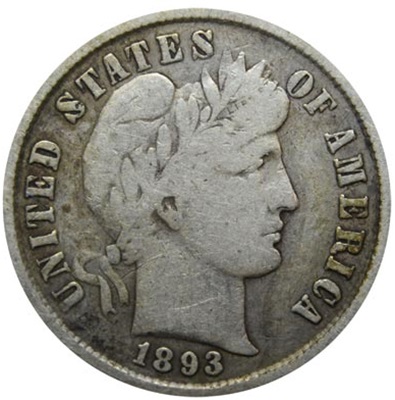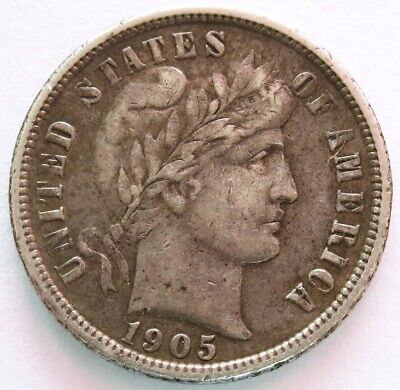The Barber Dime, minted from 1892 to 1916, is a beloved coin among numismatists. Collectors treasure these coins not only for their historical significance but also for their intricate design. If you’re curious about the value of your Barber Dime or how to grade it accurately, this guide will provide you with essential information, including a detailed value chart, design features, and grading tips.
Historical Context
The Barber Dime, designed by Charles E. Barber, was introduced in 1892. It replaced the Seated Liberty Dime, following a congressional act mandating new coin designs. The Barber Dime, along with the Barber Quarter and Half Dollar, marked a significant period in U.S. coinage, reflecting a shift towards more modern coin designs. Collectors value these coins due to their historical context and the influence they had on subsequent U.S. currency designs.

Barber Dime Value Chart
The value of a Barber Dime varies significantly based on its condition. Below is a chart that provides estimated value ranges for different grading conditions:
| Condition | Estimated Value Range ($) |
|---|---|
| Good | 5 – 10 |
| Fine | 12 – 20 |
| Extra Fine (XF45) | 30 – 50 |
| About Uncirculated (AU) | 60 – 100 |
| Brilliant Uncirculated (BU) | 150 – 300 |
| MS66 | 500 – 1,200 |

Barber Dime Obverse and Reverse Design
The obverse of the Barber Dime features the head of Liberty, adorned with a cap and a laurel wreath inscribed with “Liberty.” The reverse design showcases a wreath of corn, wheat, maple, and oak leaves encircling the denomination “One Dime.” The reeded edge consists of 118 reeds, characteristic of the coin’s design.
Mint State Condition
In Mint State, the Barber Dime shows no signs of wear. The details on Liberty’s head and the wreath are sharp and well-defined, with a full luster visible across the coin.
Fine Condition
A Barber Dime in Fine Condition exhibits moderate wear. The details on the obverse, especially Liberty’s hair and cap, are partially worn but visible. The reverse wreath shows some flattening.
Circulated Condition
In a Circulated Condition, the Barber Dime will show significant wear. The obverse may have a smooth appearance, and the finer details are heavily worn. The reverse will typically have a flattened wreath with minimal detail.
Barber Dime Composition and Physical Features
The Barber Dime is composed of 90% silver and 10% copper, with a diameter of 17.9 mm and a weight of 2.5 grams. This composition is consistent with other silver coins of the era, providing both intrinsic and collectible value.
Rare Issues and Error Coins
Some Barber Dimes are particularly rare and valuable due to low mintages or errors. Key dates include the 1894-S, which is one of the most valuable dimes due to its limited mintage of only 24 coins. Error coins, such as those with doubled dies or off-center strikes, also hold significant value.
Special Releases and Error Coins
Proof Barber Dimes were produced in limited quantities, primarily for collectors. These coins are highly sought after due to their exceptional detail and finish. Notable error coins include:
- 1893/2 Overdate: Estimated value of $1,500 – $3,000.
- 1905-O Micro O: Estimated value of $1,000 – $2,500.
How to Identify a Valuable Barber Dime
To identify a valuable Barber Dime, focus on key factors such as the year, mint mark, and overall condition. Coins with low mintages or errors are typically more valuable. A professional grading service can provide an accurate assessment, but amateur numismatists can start by examining details like strike quality and surface preservation.
How to Grade Your Barber Dimes
Amateur numismatists can grade Barber Dimes by closely examining the wear on the coin’s high points, such as Liberty’s hair on the obverse and the wreath on the reverse. Comparing your coin to others in known conditions can also aid in determining an accurate grade. Using a magnifying glass under good lighting will help you assess finer details.